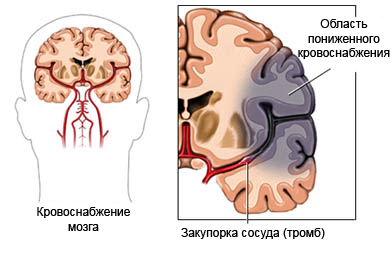Apraxia – Traffic violation
Description apraxia
Apraxia – state, in which a person can not fulfill his known movements or gestures. The patient may apraxia, It has the desire and the physical ability to perform motion, but not. It, usually, It occurs because of brain damage, such as stroke or brain tumor. There are many types of apraxia. In the presence of the disorder patient may have aphasia – speech disorder.

Reasons apraxia
Apraxia is caused by diseases or damage to the cerebral hemispheres, such as:
- Stroke;
- Encephaloma;
- Traumatic Brain Injury;
- Infection;
- Degenerative brain disease, such as:
- Alzheimer's Disease;
- Skull-visochnaya dementia (syndrome, associated with the reduction in the frontal and temporal anterior lobes of the brain);
- Huntington's Disease;
- Kortikobazalynaya ganglioznaya degeneration (DCC).
Risk factors
Since apraxia may be associated with stroke, it is important to know the risk factors for stroke, such as:
- Age: 60 and older;
- Having last stroke or cardiovascular disease;
- Having last transient ischemic attacks (TIA);
- High blood pressure;
- High cholesterol;
- Diabetes;
- Smoking;
- Dialysis (Artificial Kidney).
Symptoms of apraxia
Below is a list of some common forms of apraxia and their symptoms:
- Orofacial apraxia (general) – inability to control facial movements, eg, wink, svištět;
- Constructive apraxia – inability to copy or draw simple figures or to construct two- or three-dimensional forms;
- Apraxia of gait – characteristic signs – shuffling steps, stoop, sudden stop, inability to step over obstacles;
- Conceptual apraxia – inability to select or use tools or objects properly, inability to perform complex coordinated movements and to perform tasks;
- The kinetic apraxia – inability to perform precise movements with hands or fingers (eg, counting coins);
- Ideomotornaâ apraxia – inability to copy or make gestures, failure to execute the command;
- Dressing apraxia – the inability to put on their clothes.
Some people with apraksiej have difficulty with gait. This can lead to increased risk of falling.
Diagnosis of apraxia
The doctor asks about the symptoms and medical history, performs a physical exam. Tests may include the following:
- Neurological evaluation, to determine the type of apraxia. The doctor may ask:
- Perform some movement;
- Draw a shape;
- Gather simple construction;
- Lift or rotate coins;
- Take the tool (eg, hammer) and demonstrate, How to use it;
- Perform the action in sequencing;
- Muscle checking is performed, used in speech;
- Assessed skills walk;
- MRT – test, which uses magnetic waves, to make pictures of structures inside the brain;
- CT scan – X-ray examination, which uses computer, to make pictures of the brain.
Apraxia treatment
The course of treatment depends on the type of apraxia patients. Usually the doctor prescribes individual treatment program, which may include the following procedures:
- Physiotherapy;
- Occupational therapy;
- Speech Therapy;
- Cognitive rehabilitation.
It is also important to treatment of the underlying cause of apraxia.
Home care for a sick apraksiej
For stays with a person, who have apraxia, some health care providers may offer support:
- Nurse – to help organize a permanent patient care or outpatient treatment;
- A social worker can help you determine the necessary resources for patients and their families;
- Psychologist – to consult family members for care and communication with patients apraksiej.
Prevention of apraxia
Prevent apraksiû pretty hard. As it is closely linked to stroke, You must perform the following steps, to prevent stroke:
- Exercise regularly;
- Eat healthy food;
- You need to quit smoking and limit alcohol consumption;
- Regularly check your blood pressure.
